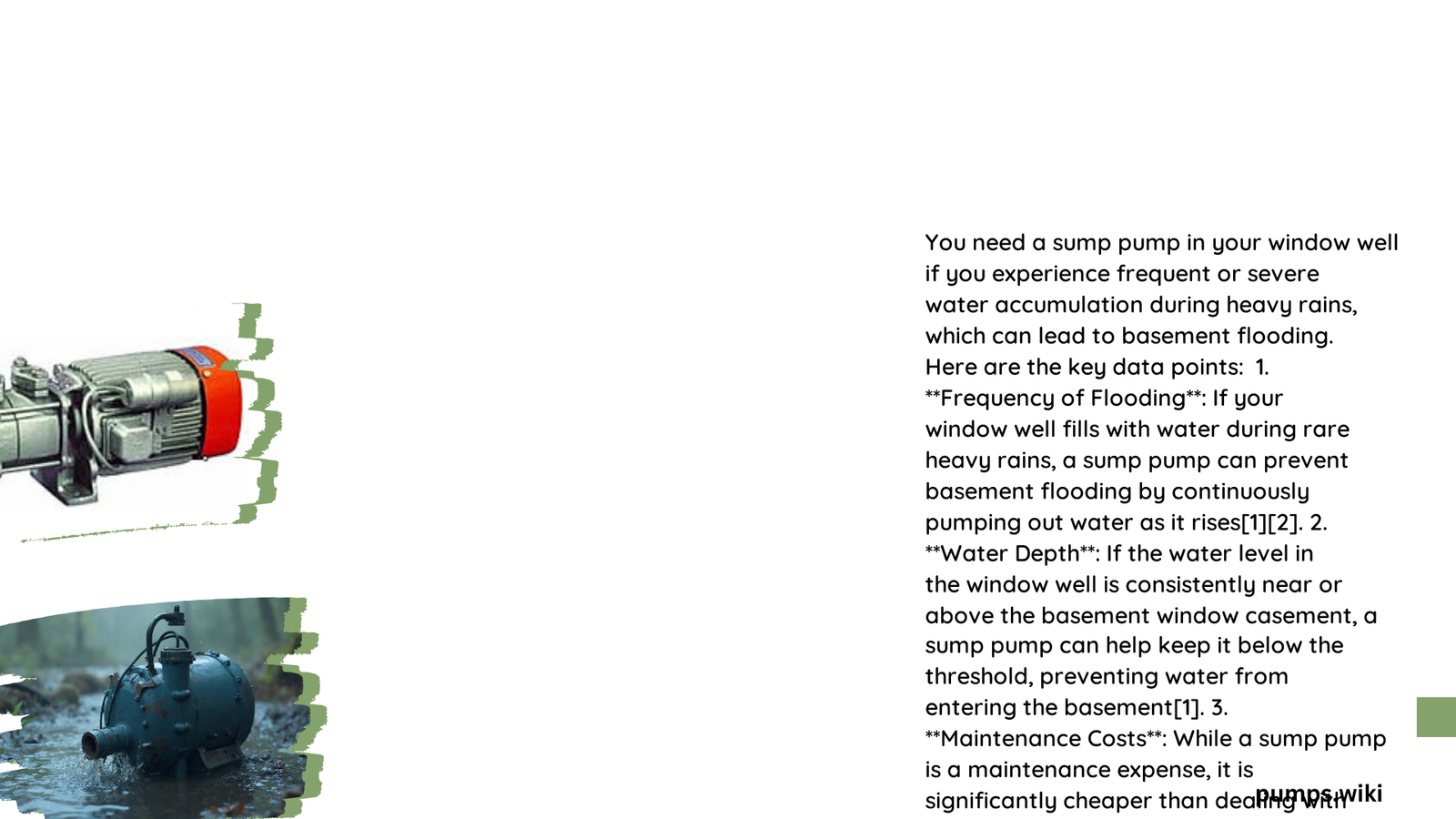Window wells are vulnerable entry points for water intrusion, potentially causing significant basement flooding and structural damage. Homeowners in regions with high rainfall, poor drainage, or historical water accumulation must carefully evaluate their specific environmental conditions to determine if a sump pump is necessary for protecting their property from water-related risks.
What Determines the Need for a Sump Pump in Window Wells?
Why Does Local Climate Matter?
Different geographical regions present unique challenges for window well water management. Consider these critical climate-related factors:
| Climate Zone | Water Accumulation Risk | Sump Pump Recommendation |
|---|---|---|
| Midwest | High (Freezing Temperatures) | Strongly Recommended |
| Coastal Regions | Moderate to High | Recommended |
| Arid Regions | Low | Optional |
Rainfall Intensity Analysis
- Heavy Rainfall Areas: More than 6 inches in 48 hours
- Moderate Rainfall Areas: 3-5 inches in 48 hours
- Low Rainfall Areas: Less than 2 inches in 48 hours
How Do Soil Conditions Impact Window Well Water Accumulation?
Soil composition plays a crucial role in determining water drainage capabilities:
- Clay Soil Characteristics
- Poor drainage
- High water retention
-
Increased hydrostatic pressure
-
Sandy Soil Characteristics
- Excellent drainage
- Low water retention
- Reduced flooding risk
What Are the Warning Signs of Potential Water Damage?
Homeowners should watch for these critical indicators:
- Water stains on basement walls
- Musty odors near window wells
- Visible moisture or dampness
- Efflorescence (white, chalky residue)
- Mold growth around window frames
How Much Can Water Damage Cost?
Water damage repair costs can be substantial:
- Minor water damage: $500 – $1,500
- Moderate water damage: $2,000 – $5,000
- Extensive water damage: $5,000 – $15,000+
What Are the Technical Specifications for Window Well Sump Pumps?
Pump Capacity Requirements
- Small Wells: 300 GPH (Gallons Per Hour)
- Medium Wells: 500-750 GPH
- Large Wells: 1000+ GPH
Installation Considerations
- Proper depth placement
- Drainage pipe specifications
- Battery backup systems
- Corrosion-resistant materials
What Are Alternative Water Management Solutions?
While sump pumps are effective, consider these alternatives:
- French drain installation
- Exterior grading modifications
- Window well covers
- Perimeter drainage systems
When Should You Consult a Professional?
Seek expert advice if you experience:
– Recurring water accumulation
– Structural foundation concerns
– Complex drainage issues
– Persistent basement moisture
Conclusion

Determining the need for a sump pump in your window well requires careful evaluation of multiple factors. By understanding your local climate, soil conditions, and potential water damage risks, you can make an informed decision to protect your property.
